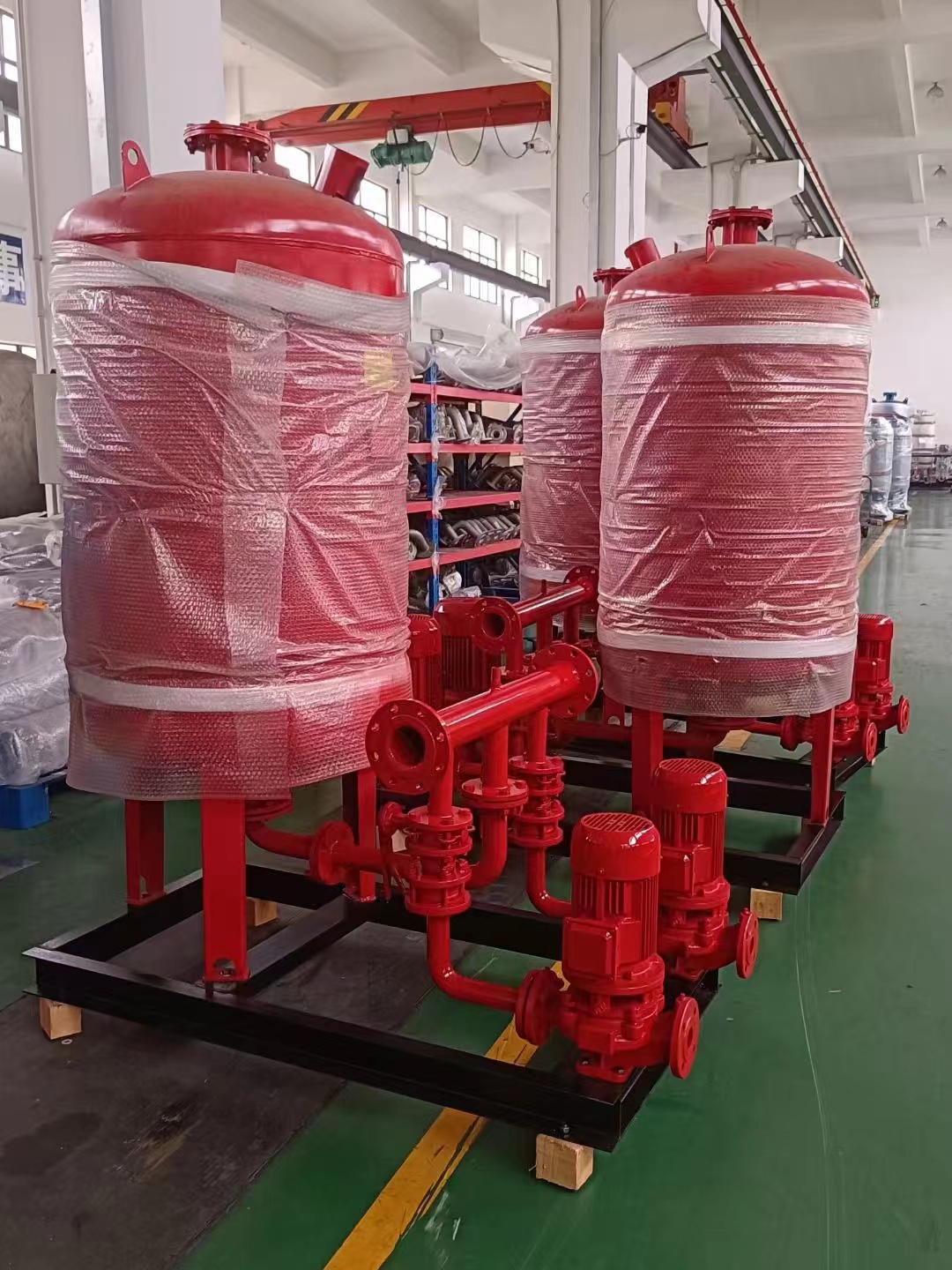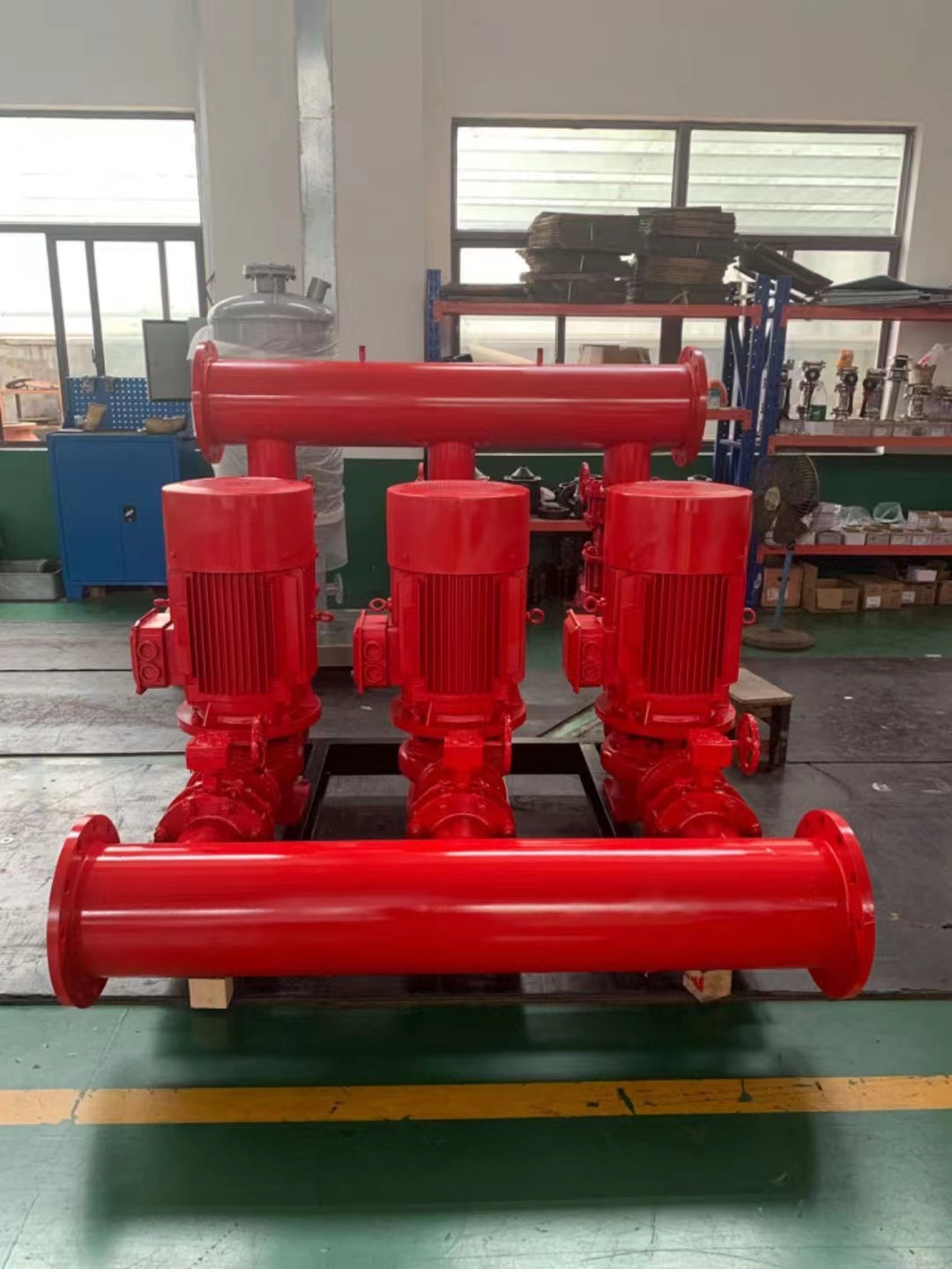Fire pumps are often used in conjunction with pressure tanks and as part of a complete system
In firefighting systems, fire pumps are often used in conjunction with pressure tanks and as part of a complete system. The combination of these components is crucial for ensuring a reliable water supply to the fire hydrants or sprinkler systems during emergencies. Here are several scenarios where such an application is typically utilized:
1. Emergency Water Supply for Fire Hydrants
Scenario: In large commercial buildings, industrial complexes, and high-rise residential structures, fire pumps are integral for delivering a continuous flow of water to fire hydrants when the municipal water supply cannot meet the required pressure levels. This is particularly critical during the initial stages of a fire, where quick and efficient water delivery is paramount for controlling the blaze.
Application: The fire pump is connected to a pressure tank that acts as a reservoir. When a fire is detected, the pump activates, drawing water from a source (like a lake, river, or a water tower) and increasing the water pressure within the tank. This pressurized water can then be distributed to the hydrants throughout the building, ensuring that each hydrant has sufficient water flow to combat the fire effectively.
2. Supplemental Water Pressure in Sprinkler Systems
Scenario: Sprinkler systems rely on adequate water pressure to ensure that all sprinkler heads activate properly in case of a fire. However, natural decreases in water pressure over time can affect system performance. Fire pumps coupled with pressure tanks help maintain this critical pressure.
Application: During a fire, if the municipal water pressure drops below the required level, the fire pump kicks in to boost the pressure in the tank. This ensures that the sprinkler system operates efficiently, distributing water evenly across the protected area, thereby enhancing fire safety.

3. Domestic Fire Safety Solutions
Scenario: In smaller homes and businesses, a complete fire protection system might not always include a municipal water supply connection. Here, portable fire pumps and pressure tanks come into play, providing a localized solution for fire protection.
Application: These systems are particularly useful in areas prone to droughts or where the risk of fires is high. They ensure a constant water supply at high pressure to fire extinguishers or portable sprinklers, enabling rapid response to fires that may occur in remote or isolated locations.
4. Testing and Maintenance
Scenario: Regular testing and maintenance of fire suppression systems require the pump and tank setup to function properly. Ensuring the reliability of this system is essential to prevent false alarms and to guarantee that the equipment will work under emergency conditions.
Application: Fire pumps and pressure tanks are tested regularly to ensure they can handle the required flow rate and pressure without fail. This includes checking the tank’s ability to maintain its pressure levels and the pump’s efficiency in both start-up and sustained operation scenarios.

Conclusion
The integration of fire pumps with pressure tanks and other components forms a robust system that significantly enhances the effectiveness of fire protection measures. By ensuring a continuous and high-pressure water supply, these systems provide firefighters and building occupants with the necessary resources to combat fires promptly and effectively, minimizing damage and loss of life. This coordinated approach to fire protection is a testament to the meticulous engineering behind ensuring public safety and property integrity in the face of potential fire hazards.




